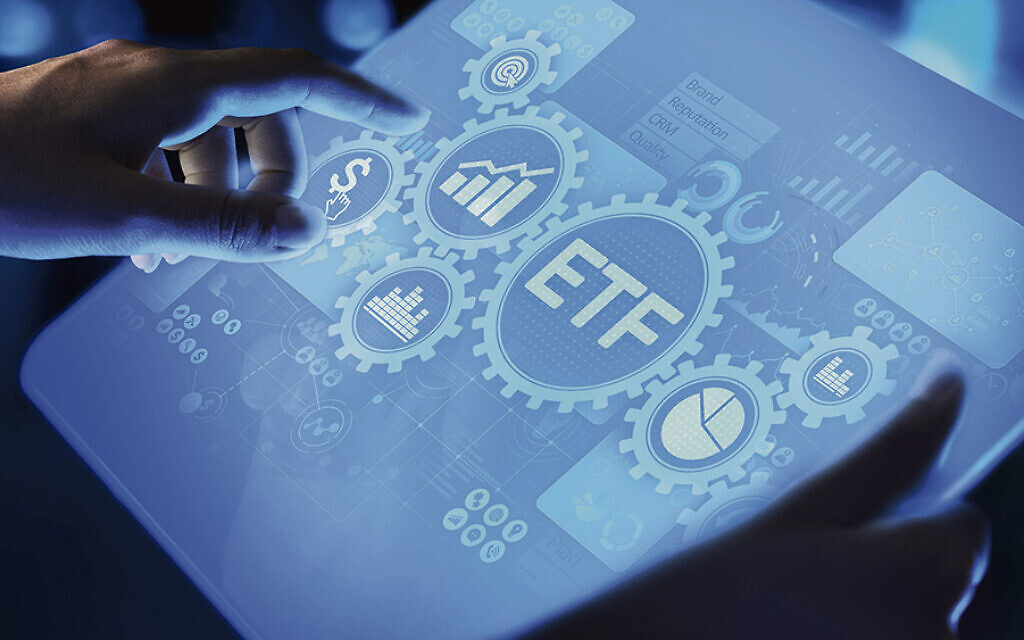Explore the brave new world of ETFs
FOR many years, exchange traded funds (ETFs) have been the worthy but dull wardrobe staple of investing. In a colourful closet of exciting investment options they’ve been pushed to the back like a safe but sturdy pair of shoes, a frumpy frock or a drab suit.
However, exciting new developments mean they are now ready to be the centre of attention.
No longer quite so acquiescent, they can now tap into the secrets of the best-performing self-managed super funds or track the planet’s highest-flying dividend stocks.
These have led a seasoned market commentator to point out the ETF paradox: there are now so many options investors must actively decide which passive investment to jump into.
ETFs are commonly described as baskets of securities that investors can buy and sell on exchanges just like any other stock.
State Street Global Advisors were the creator of the world’s first ETFs in Australia and the United States, and the firm’s Meaghan Victor explains in greater detail how they work: “The aim is usually to track the performance of an index – such as a sector or market – in an efficient and low-cost way.”
One-stop shop
“They are a transparent, easy-to-use and low-cost investment tool that investors of all ages are using to meet their income and savings needs,” Victor says.
“They can offer broad exposure and access to a comprehensive range of global and Australian equities and bonds in one trade.”
In addition to being straightforward, they are attractive because of their low fees – a distinct advantage in these lean low-yield times.
For example, State Street’s SPDR S&P/ASX 200 Fund, which tracks the S&P/ASX 200 Index, has an annual fee of just 0.19 per cent.
SPDR, which is pronounced as spider, stands for Standard & Poor’s Depositary Receipts, the name of the original exchange-traded fund launched by State Street in 1993.
Far horizons
Victor, who is head of SPDR ETFs (Australia & Singapore), says one useful role that ETFs can play is to help overcome what she calls “home bias”.
“Australian investors today are very heavily invested in local companies. Self-managed superannuation fund investors, for example, hold about a third of their Australian share allocation in just 10 companies – which we think is too narrow a concentration. There should be more diversification across the 2000 companies on the Australian Securities Exchange.”
There are also ETFs for investors looking further afield. Those wanting exposure to America’s high-tech superstars such as Amazon, Apple, Alphabet (Google’s parent company) and Netflix could check out one like the BetaShares Nasdaq 100 ETF.
Gold rush
As well as stockmarket indices, ETFs also allow investors easy access to commodities such as gold.
The world’s first gold-backed exchange-traded commodity was launched in 2003, when it was listed on the Australian sharemarket by ETF Securities.
Each share was backed by one-tenth of an ounce of gold priced in US dollars and securely stowed away in a London vault.
The Australian newspaper reported in June 2019 that the chief executive of robo-adviser Stockspot Chris Brycki said someone invested 100 per cent in ETFs might consider a 12 per cent allocation to gold.
Attaining this target is easier now that there is a far wider range of gold ETFs available, such as the VanEck Vectors Gold Miners ETF. This gives investors exposure to companies involved in the gold-mining industry.
Given all the above, it’s no surprise that there are already some 200 ETFs listed on the Australian market and that the rapid growth is expected to continue. The local market is currently worth more than $50 billion, up from $1.5 billion in 2008.
Although the investment environment and outlook can change over the years and decades, ETFs will always have a role to play.
For example, “We know that in a low-interest-rate environment many investors turn to certain ETFs to provide an income stream,” says Victor.
Happy hunting
However, inexperienced investors should be wary of badly constructed dividend ETFs that lure them into the “dividend trap”.
This happens when, although the yield looks high, it may be unsustainable – and the unwary yield hunter is savaged by not only a tumbling share price but also a dividend cut.
Well-constructed ETFs such as the SPDR S&P Global Dividend Fund avoid this by offering access to global high-yielding companies that have grown or maintained their dividend yields for at least 10 consecutive years.
As Victor says, “This is a high bar for companies – out of 11,000 global stocks in the S&P Broad Market Index, which is a global index, only the top 100 stocks based on dividend-yield weights are included in the S&P Global Dividend Aristocrats Index, the index that tracks WDIV.
“With such a highly select group of stocks in the S&P Global Dividend Aristocrats Index, investors can access dividend growth and potentially more stable income returns, from a globally diversified portfolio.”
Winning combination
And for investors wondering how ETFs can play a role in these times of increasing economic uncertainty, she says: “We know from adviser feedback that investors look for cheap stocks that have sound businesses and potential for significant returns. Over 50 years of research supports this view: that inexpensive stocks tend to outperform more expensive stocks (value); healthy companies tend to outperform less healthy companies (quality); and lower volatility stocks tend to generate a higher risk-adjusted return than high-volatility stocks.
“In today’s environment of heightened market uncertainty, this combination of characteristics offers both defensive risk and growth potential,” Victor says.
“Until recently, finding an investment vehicle in the local market for a strategy that seeks to capture multiple factors had been impossible. But with the introduction of smart-beta ETFs investors now have easy access to sophisticated portfolio-tilting strategies that were previously available only to institutional investors. Traded on the ASX like ordinary shares, these ETFs (which include the SPDR MSCI World Quality Mix Fund also known as QMIX) offer trading flexibility and cost-efficient implementation.”
(Smart beta investing combines the benefits of passive investing, such as index tracking, with the advantages of active investing strategies, such as those employed by fund managers.)
Passive pays off
Given the opportunities now offered by ETFs, it’s no wonder the AFR reported that investors withdrew a net $3 billion from active Aussie share-fund managers over the first five months of 2019.
Statistics show that this was a wise move. In July 2019, a fund-manager performance survey by Mercer showed the median active Aussie share-fund manager made a 9 per cent return over the 12 months to June 2019, which significantly lagged the market’s 11.5 per cent return. A performance made even worse when their fees of at least 1 per cent are taken into account.
On the other hand, the biggest Aussie-equity ETFs of State Street’s SPDR S&P/ASX 200 Fund and Vanguard’s Australian Shares Index ETF, returned 11.3 per cent and 11.2 per cent respectively over the year to June 30.
That is, just a little less than the market return and for a small fee.
Globally, the biggest ETFs are the iShares S&P 500 fund which returned 15.8 per cent and Vanguard’s MSCI Index International Shares ETF, 12 per cent. The median global stock picker from the Mercer survey managed a meagre 11.4 per cent before fees.
How low?
The good news is that fees could fall even lower. In mid-October 2019, Kapstream Capital became the first investment manager to have its products quoted and traded by the Chi-X Australia exchange.
The $5.8 billion ActiveX Kapstream Absolute Return Income Fund will be available on Chi-X’s ASX alternative exchange with funds run by Schroders and Perennial Value Management expected to follow shortly. (Chi-X is a stock exchange that accounts for about 22 per cent of average daily cash equities trading and 36.5 per cent of ETF volume.)
The chief executive of Chi-X, former Deutsche Bank MD Vic Jokovic, told the AFR, “The ETF issuers … have [until now] had no avenue to get lower fees.
“We suspect the ASX will respond as more funds come on to Chi-X with lower listing and trading fees. [The ASX] is a great business because a number of its key revenue streams are monopoly revenue streams – and [ETFs were] one of those.”
Creme de la creme
An exciting new ETF about to be launched on the ASX is the SMSF Leaders Fund, jointly listed by ETF Securities Australia and online broker and investment adviser SelfWealth. Rather than mimic the performance of broad indices, the SMSF Leaders Fund will track the portfolio activity of the top 10 per cent of SMSF investors in Australia using data supplied by SMSS administrator BGL and obtained exclusively by SelfWealth.
ETF Securities Australia was founded by legendary ETF pioneer Graham Tuckwell, who launched the world’s first gold exchange-traded commodity in 2003 referred to above. He believes the industry will continue to innovate and expand. Especially if investors are able to access more meaningful data that allows them to compare the various products.
To this end, his firm ETFS Capital has invested in companies in Great Britain and the United States that supply both ETF data and the tools needed to interpret it. Speaking to The Sydney Morning Herald, he said, “We are trying to democratise this stuff – it’s only the big institutions that have got all of this type of data.”
The information provided is the opinion of the author. The AJN recommends that readers seek independent financial advice.
Get The AJN Newsletter by email and never miss our top stories Free Sign Up



comments